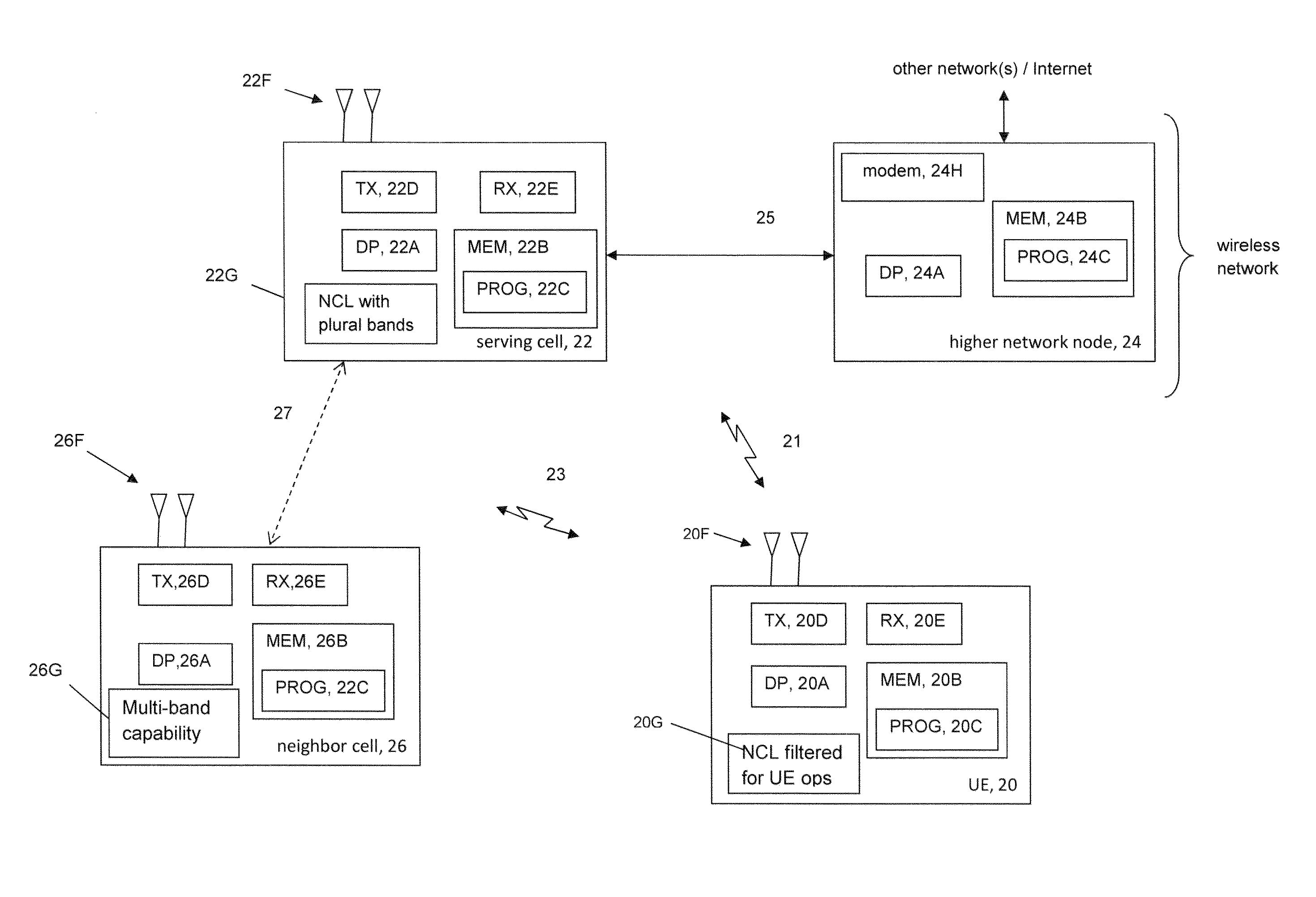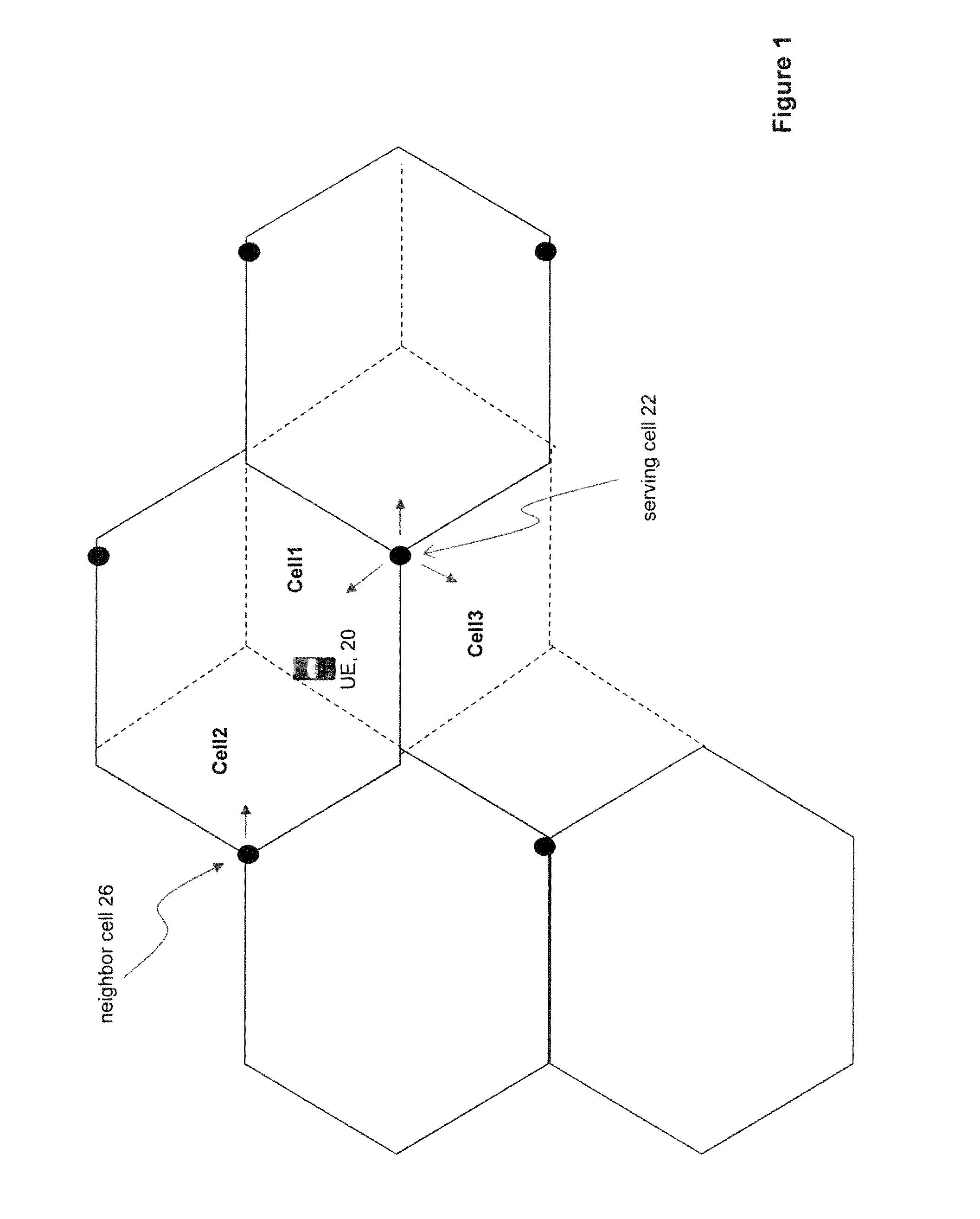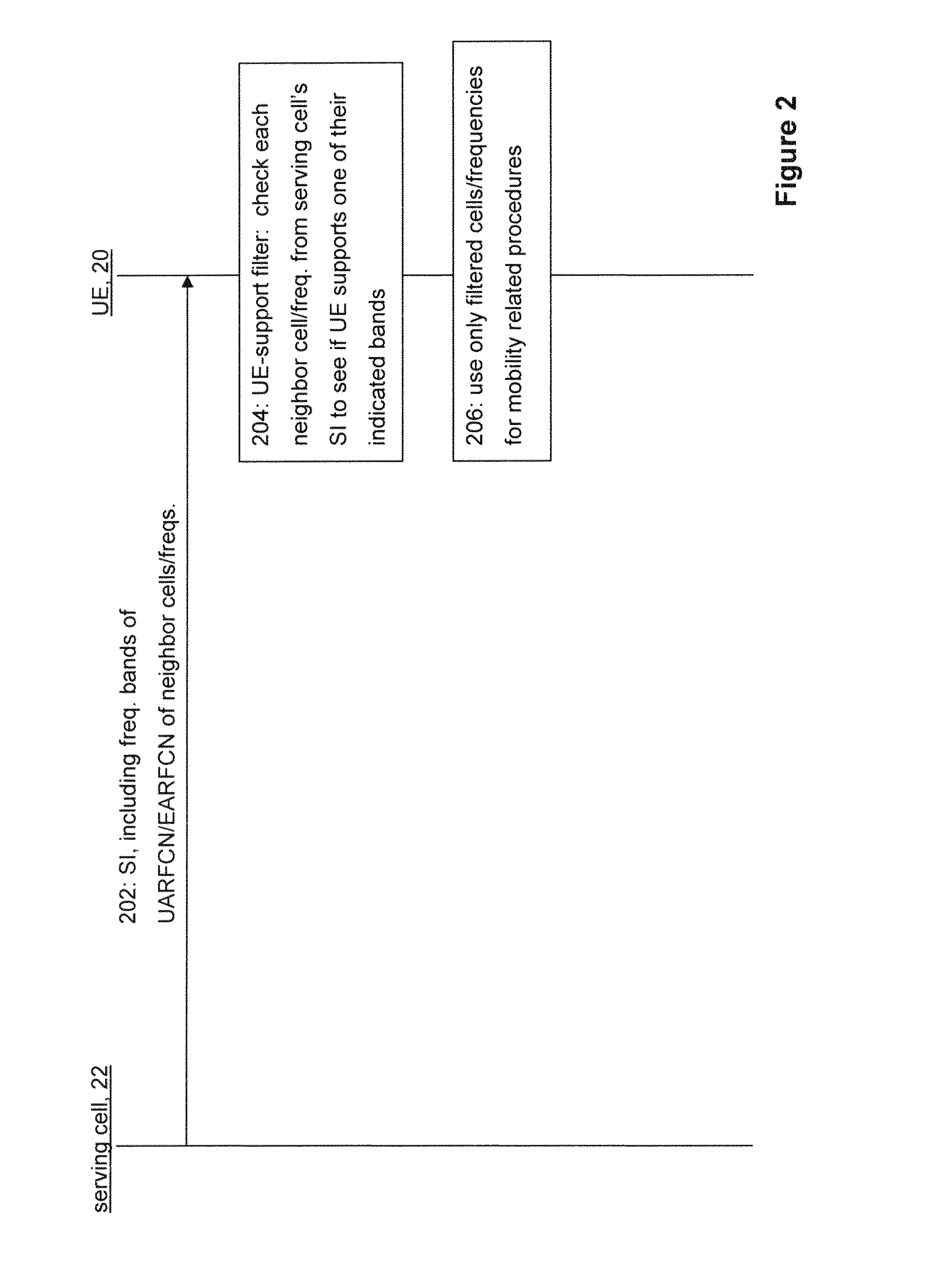Apparatus, computer programs and methods for enabling filtering of neighbor cells or frequencies
a technology of neighbor cells and computer programs, applied in the field of wireless communication, can solve the problems of limited number of cells, inability to increase the size further, and inability to meet the needs of users,
- Summary
- Abstract
- Description
- Claims
- Application Information
AI Technical Summary
Benefits of technology
Problems solved by technology
Method used
Image
Examples
Embodiment Construction
[0032]While the two documents noted in the background section above refer to the cell broadcasting in its own SI the additional bands which it supports, those proposals do not go far enough. To avoid the UE undertaking certain mobility procedures as noted above which will in the end prove fruitless due to the UE's incompatibility with a neighbor cell, in an embodiment of these teachings the serving cell will broadcast in its SI an indication of the multiple frequency bands that its individual neighbor cells or neighbor frequencies support. For example, a UTRAN serving cell will broadcast in its own SI indications of the frequency bands which its neighbor UTRAN cells support and which its neighbor LTE frequencies support. For the case of a LTE serving cell, it will broadcast in its own SI indications of the frequency bands which its neighbor frequencies (UTRAN and LTE) support. In this manner, the UE can see the entire list of bands which each neighbor cell or frequency supports, and...
PUM
 Login to View More
Login to View More Abstract
Description
Claims
Application Information
 Login to View More
Login to View More - R&D
- Intellectual Property
- Life Sciences
- Materials
- Tech Scout
- Unparalleled Data Quality
- Higher Quality Content
- 60% Fewer Hallucinations
Browse by: Latest US Patents, China's latest patents, Technical Efficacy Thesaurus, Application Domain, Technology Topic, Popular Technical Reports.
© 2025 PatSnap. All rights reserved.Legal|Privacy policy|Modern Slavery Act Transparency Statement|Sitemap|About US| Contact US: help@patsnap.com



